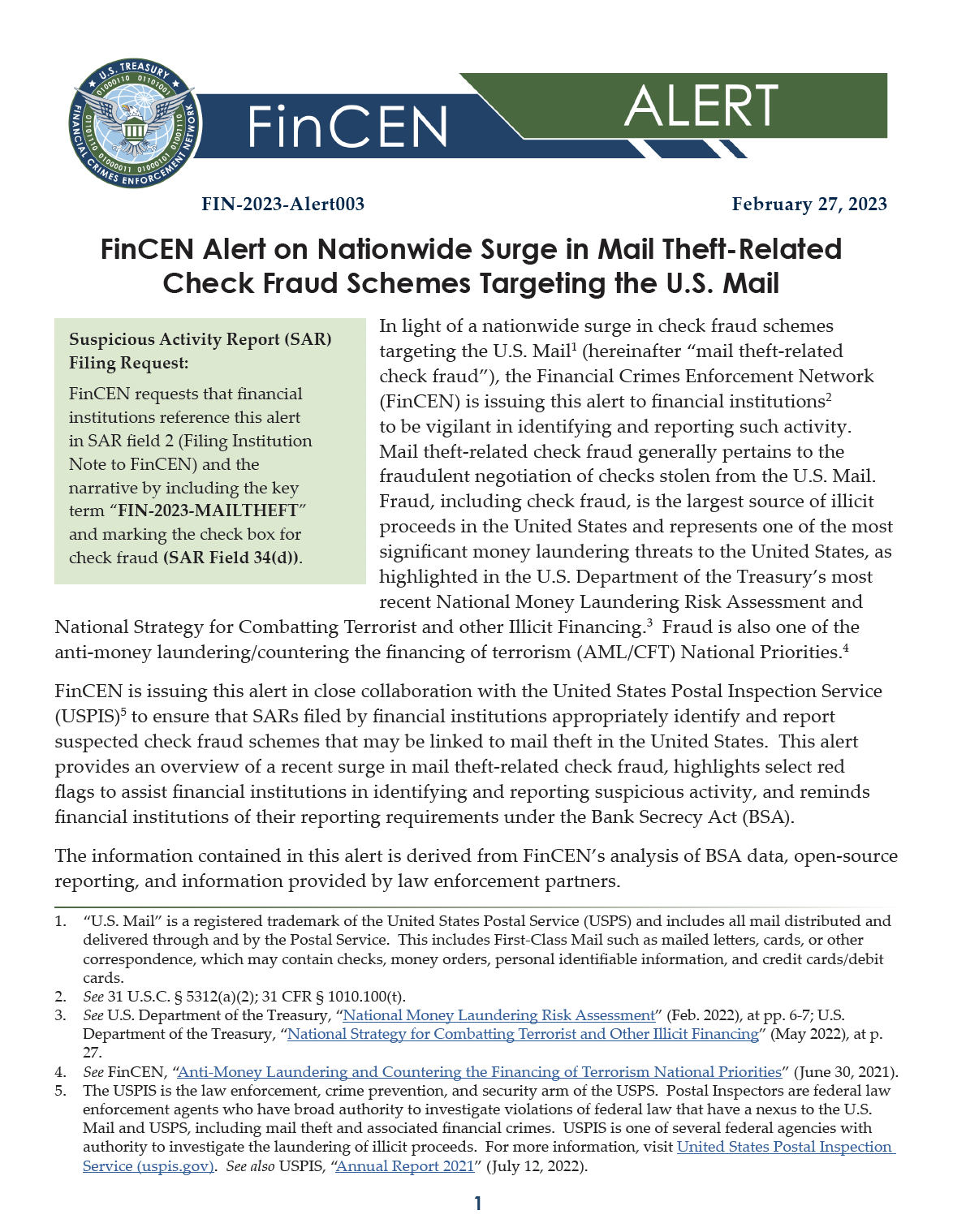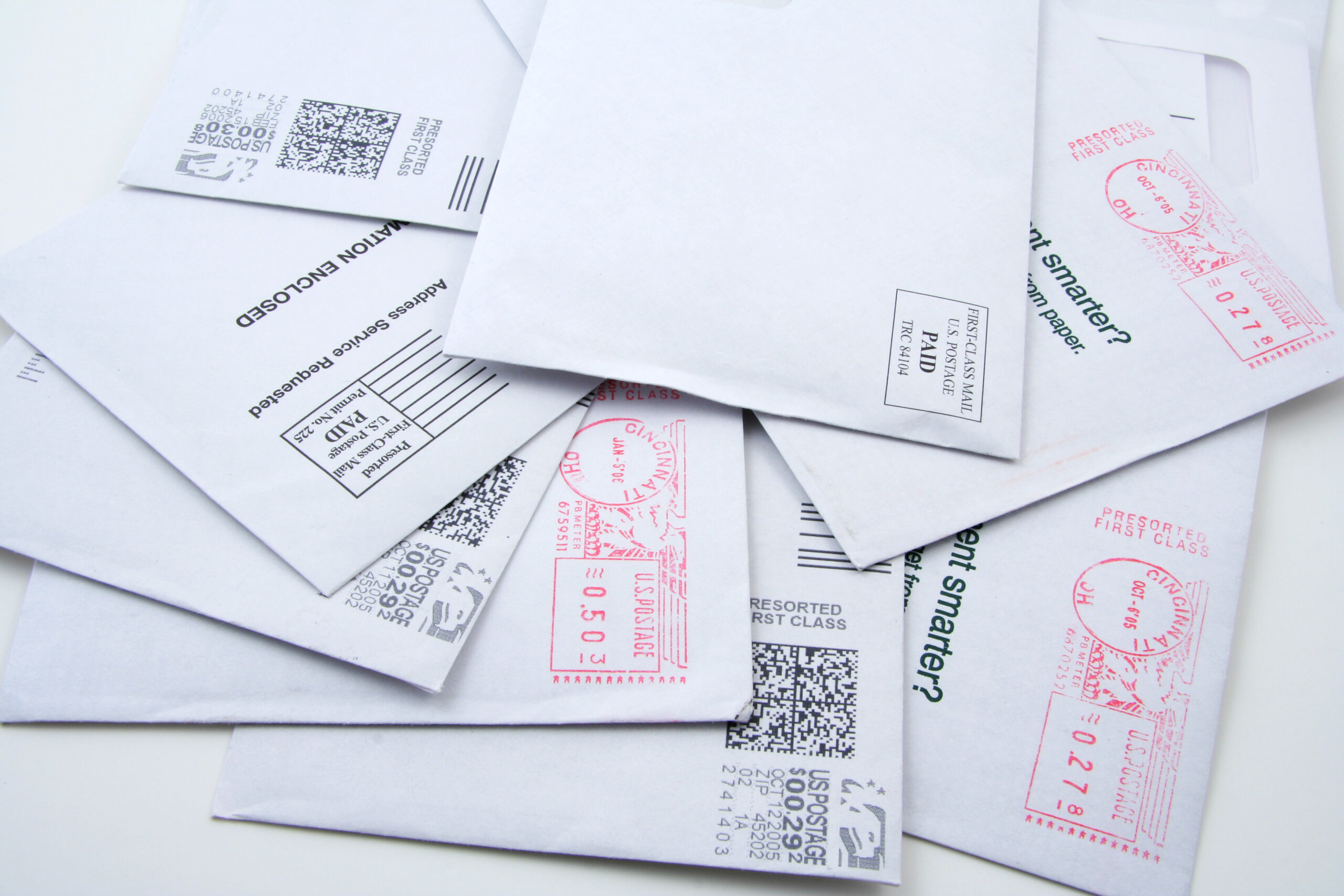FinCEN Warning: Check Fraud Related SARs Nearly Double in 2022
- FinCEN reports a large increase in check fraud
- They characterize it as a "nationwide surge"
- Physical checks acquired via mail theft seem to be favored targets
The Financial Crimes Enforcement Network (FinCEN) has made it clear: There is a nationwide surge in check fraud, and it is targeting the US mail.
“Criminals have been increasingly targeting the U.S. Mail and United States Postal Service mail carriers since the COVID-19 pandemic to commit check fraud,” the agency said in a Monday (Feb. 27) news release.
FinCEN reveals that Bank Secrecy Act reporting for check fraud has risen to a large extent in the last three years. As reported at PYMNTS.com:

In 2021, financial institutions filed more than 350,000 Suspicious Activity Reports (SARs) to FinCEN to report potential check fraud, a 23% increase from the previous year. That upswing continued into 2022, when the number of SARs related to check fraud topped 680,000.
“Criminals typically steal personal checks, business checks, tax refund checks, and checks related to government assistance programs, such as Social Security payments and unemployment benefits,” FinCEN said in the release.
A "Nationwide Surge"
In their Alert Newsletter dated February 27, 2023, FinCEN says:
In light of a nationwide surge in check fraud schemes targeting the U.S. Mail (hereinafter “mail theft-related check fraud”), the Financial Crimes Enforcement Network (FinCEN) is issuing this alert to financial institutions to be vigilant in identifying and reporting such activity. Mail theft-related check fraud generally pertains to the fraudulent negotiation of checks stolen from the U.S. Mail. Fraud, including check fraud, is the largest source of illicit proceeds in the United States and represents one of the most significant money laundering threats to the United States, as highlighted in the U.S. Department of the Treasury’s most recent National Money Laundering Risk Assessment and National Strategy for Combatting Terrorist and other Illicit Financing. Fraud is also one of the anti-money laundering/countering the financing of terrorism (AML/CFT) National Priorities.

FinCEN statistics reveal that the substantial increase in SARs (Suspicious Activity Reports) that took place in 2021 only got worse in 2022:
- In 2021, financial institutions filed more than 350,000 SARs to FinCEN to report potential check fraud, a 23% increase over the number of check fraud-related SARs filed in 2020.
- This upward trend continued into 2022, when the number of SARs related to check fraud reached over 680,000, nearly double the previous year’s amount of filings
- From March 2020 through February 2021, the USPIS received 299,020 mail theft complaints, which was an increase of 161% compared with the same period a year earlier
USPS Vulnerabilities Enabling Increase in Check Fraud
Scammers and fraudsters see great value in physical checks, and therefor are willing to "go the extra mile" -- theft and actual physical assault of mail carriers -- to get them.
Criminals committing mail theft-related check fraud generally target the U.S. Mail in order to steal personal checks, business checks, tax refund checks, and checks related to government assistance programs, such as Social Security payments and unemployment benefits. Criminals will generally steal all types of checks in the U.S. Mail as part of a mail theft scheme, but business checks may be more valuable because business accounts are often well-funded and it may take longer for the victim to notice the fraud.

Mail is indeed a vulnerable target:
These criminals, located throughout the country, target USPS blue collection boxes, unsecured residential mailboxes, and privately owned cluster box units at apartment complexes, planned neighborhoods, and high-density commercial buildings. Mail theft can occur through forced entry or the use of makeshift fishing devices, and increasingly involves the use of authentic or counterfeit USPS master keys, known as Arrow Keys. Arrow Keys open USPS blue collection boxes and cluster box units within a geographic area, and a number of recent cases involve organized criminals violently targeting USPS mail carriers with the intent of stealing Arrow Keys.
With the vulnerability of mail infrastructure in mind, it's crucial for banks to prioritize deploying new and innovation technologies like AI and machine learning for check fraud detection. Developments in image forensics such as Writer Verification -- the ability for the technology to analyze writing styles of previous cleared checks to compare to newly deposited items -- increase the banks capabilities to detect counterfeits, forgeries, and alterations.
Check fraud is continuing to trend upwards, and banks must do whatever it takes to reverse the curve.
